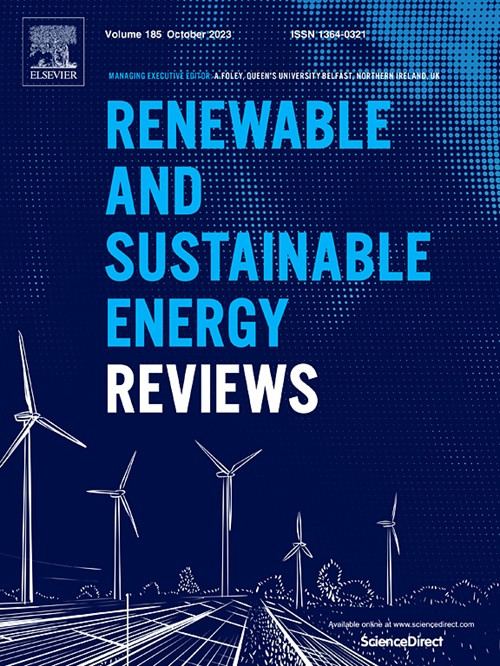纤维素基热管理复合材料:多行业可持续发展的新兴材料
IF 16.3
1区 工程技术
Q1 ENERGY & FUELS
引用次数: 0
摘要
以纤维素为主要成分的生物质资源已被证明在减少环境污染和碳排放方面是有效的,但纤维素的低利用效率和复杂的后续处理方法仍然是实现高效生态系统碳循环的挑战。此外,近年来新兴的热管理技术以其无能量输入、无污染输出的特点被广泛应用于许多领域,为解决能源危机提供了一种新的调控策略。因此,基于纤维素的热管理材料(CTMM)结合了上述优点。然而,很少有相应的审查考虑到这些有前途的材料在可再生和可持续方面的积极影响。本文将纤维素与热管理技术有机地联系起来,以说明纤维素在温度调节方面的综合潜力。讨论了纤维素的主要理化性质、常用改性方法及衍生物。同时,借助热辐射原理和传热模型,对不同温度要求下的热辐射界面设计进行了详细的描述和总结。最后,列举了CTMM在建筑、人体、农业等领域的应用。本文综述有助于深入了解CTMM的最新研究进展,为开发可再生、可持续和可行的创新温度调节装置提供有价值的见解。本文章由计算机程序翻译,如有差异,请以英文原文为准。

Cellulose-based thermal management composites: An emerging material for multi-industry sustainability
Biomass resources with cellulose as the main component have been proved to be effective in reducing environmental pollution and carbon emission, but the low utilization efficiency of cellulose and the complex subsequent treatment methods still remain challenges for achieving efficient ecosystem carbon cycle. Additionally, the emerging thermal management technology in recent years is widely applied in many fields due to its characteristics of no energy input and no pollution output, providing a new regulation strategy for solving energy crisis. In response, cellulose-based thermal management materials (CTMM) have been prepared to combine the above advantages. However, there are few corresponding reviews to consider the positive effects of such promising materials on renewable and sustainable aspects. This review organically links cellulose and thermal management technology to illustrate the comprehensive potential of cellulose in temperature regulation. The main physicochemical properties, common modification methods and derivatives of cellulose are discussed. Meanwhile, with the help of the thermal radiation principle and heat transfer model, the design of thermal radiation interface with different temperature requirements is described and summarized in detail. Finally, the application of CTMM in the fields of architecture, human body and agriculture is listed. This review contributes to a deeper understanding of recent research advances in CTMM and provides valuable insights for the development of renewable, sustainable and feasible innovative temperature regulation devices.
求助全文
通过发布文献求助,成功后即可免费获取论文全文。
去求助
来源期刊

Renewable and Sustainable Energy Reviews
工程技术-能源与燃料
CiteScore
31.20
自引率
5.70%
发文量
1055
审稿时长
62 days
期刊介绍:
The mission of Renewable and Sustainable Energy Reviews is to disseminate the most compelling and pertinent critical insights in renewable and sustainable energy, fostering collaboration among the research community, private sector, and policy and decision makers. The journal aims to exchange challenges, solutions, innovative concepts, and technologies, contributing to sustainable development, the transition to a low-carbon future, and the attainment of emissions targets outlined by the United Nations Framework Convention on Climate Change.
Renewable and Sustainable Energy Reviews publishes a diverse range of content, including review papers, original research, case studies, and analyses of new technologies, all featuring a substantial review component such as critique, comparison, or analysis. Introducing a distinctive paper type, Expert Insights, the journal presents commissioned mini-reviews authored by field leaders, addressing topics of significant interest. Case studies undergo consideration only if they showcase the work's applicability to other regions or contribute valuable insights to the broader field of renewable and sustainable energy. Notably, a bibliographic or literature review lacking critical analysis is deemed unsuitable for publication.
 求助内容:
求助内容: 应助结果提醒方式:
应助结果提醒方式:


